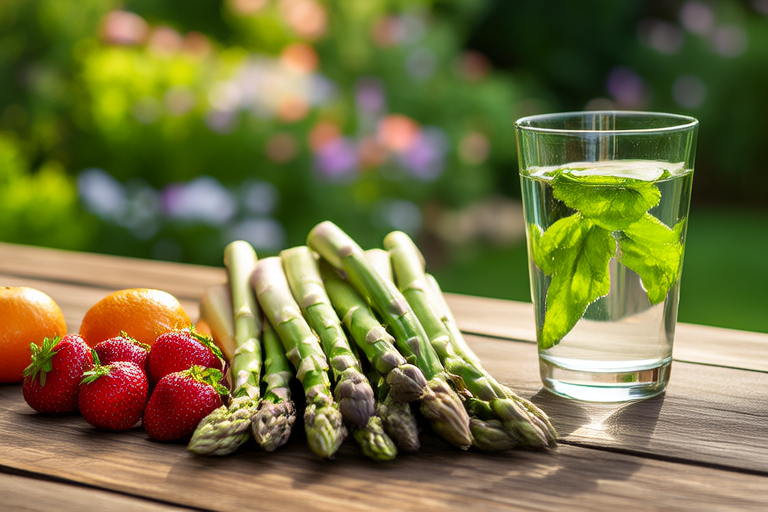Harmonizing Health Through Seasonal Strategies for Year-Round Wellbeing
As the seasons change, so too do the challenges and opportunities we face in maintaining our health. Each season brings unique environmental factors that can impact our physical, mental, and emotional well-being. By aligning our health strategies with the natural rhythms of the year, we can better adapt to these changes and promote overall wellness. This article will explore how to harmonize health through seasonal strategies, focusing on detoxification, rejuvenation, hydration, sun protection, immune support, grounding activities, warmth, mental health, and staying active indoors. We’ll start with spring, move through summer, transition into fall, and conclude with winter.
Spring: Detoxification, Rejuvenation, and Increasing Physical Activity
Spring is a time of renewal and growth, offering an ideal opportunity to cleanse and rejuvenate after the dormant winter months. As nature awakens from its slumber, so too should we take steps to detoxify our bodies and minds. This season’s longer days and warmer temperatures encourage increased physical activity, which is essential for maintaining good health.
- Detoxification: Begin by incorporating more fresh fruits and vegetables into your diet. Foods rich in fiber, such as leafy greens, berries, and cruciferous vegetables, help eliminate toxins from the body. Consider adding a gentle herbal detox tea or supplement to support liver function. Avoid processed foods, sugars, and alcohol to reduce the burden on your digestive system.
- Rejuvenation: Take advantage of the longer daylight hours by spending time outdoors. Fresh air and sunlight can boost mood and energy levels. Practice deep breathing exercises or yoga to enhance relaxation and reduce stress. Consider scheduling regular massages or acupuncture sessions to promote circulation and release tension.
- Increase Physical Activity: With the arrival of spring, outdoor activities become more accessible. Engage in regular exercise, such as walking, jogging, cycling, or team sports. Aim for at least 150 minutes of moderate-intensity aerobic activity per week. Strength training exercises can also help build muscle mass and improve bone density.
By embracing spring’s natural energy, you can set yourself up for a healthier year ahead. Focus on detoxifying your body, rejuvenating your spirit, and increasing your physical activity to capitalize on this season’s benefits.
Summer: Hydration, Sun Protection, and Cooling Foods
Summer brings long, sunny days and warm temperatures, making it crucial to prioritize hydration, sun protection, and cooling foods. The increased heat and humidity can lead to dehydration, sunburn, and heat exhaustion if proper precautions aren’t taken. Additionally, the abundance of fresh produce provides an excellent opportunity to incorporate cooling foods into your diet.
- Hydration: Drink plenty of water throughout the day to prevent dehydration. Carry a reusable water bottle with you when you’re out and about. Consider adding slices of lemon, cucumber, or mint for flavor. Avoid sugary drinks and excessive caffeine consumption, as they can contribute to fluid loss.
- Sun Protection: Protect your skin from harmful UV rays by wearing sunscreen with at least SPF 30. Apply it generously and reapply every two hours or after swimming or sweating. Wear protective clothing, such as wide-brimmed hats and sunglasses, and seek shade during peak sun hours (10 a.m. to 4 p.m.).
- Cooling Foods: Incorporate cooling foods into your meals to combat the summer heat. Examples include watermelon, cucumbers, cantaloupe, spinach, and mint. These foods can help regulate body temperature and provide essential nutrients. Enjoy refreshing salads, smoothies, and chilled soups to stay cool and nourished.
By staying hydrated, protecting yourself from the sun, and consuming cooling foods, you can enjoy a healthy and enjoyable summer. Remember to listen to your body and adjust your activities accordingly to avoid overexertion.
Fall: Immune Support, Grounding Activities, and Preparing for Colder Weather
As the leaves change color and the temperatures drop, fall presents both challenges and opportunities for maintaining optimal health. The cooler weather signals the need to bolster our immune systems and prepare for the upcoming winter months. Additionally, fall’s shorter days and more subdued energy offer an ideal time for grounding activities and reflection.
- Immune Support: Strengthen your immune system by eating a balanced diet rich in vitamins and minerals. Focus on whole grains, lean proteins, healthy fats, and colorful fruits and vegetables. Consider taking a multivitamin or specific supplements, such as vitamin D, zinc, or elderberry syrup, to support immune function. Stay active to promote circulation and reduce inflammation.
- Grounding Activities: Embrace the slower pace of fall by engaging in grounding activities that connect you to the earth and your inner self. Try gardening, hiking, or simply taking leisurely walks in nature. Practice mindfulness meditation or journaling to process your thoughts and emotions. Spend quality time with loved ones to foster social connections and reduce feelings of isolation.
- Preparing for Colder Weather: As temperatures begin to drop, it’s essential to prepare your home and body for the colder weather ahead. Insulate your home to maintain comfortable indoor temperatures. Layer your clothing when venturing outside to stay warm without overheating. Gradually adjust your heating schedule to avoid shocking your body with sudden temperature changes.
By supporting your immune system, engaging in grounding activities, and preparing for colder weather, you can transition smoothly into fall and winter. Stay mindful of your needs and make adjustments as necessary to ensure your comfort and well-being.
Winter: Warmth, Mental Health, and Staying Active Indoors
Winter presents unique challenges for maintaining health, particularly in terms of warmth, mental health, and staying active indoors. The cold temperatures, reduced sunlight, and limited outdoor activities can contribute to feelings of lethargy, depression, and social isolation. However, by implementing specific strategies, you can thrive during this season.
- Warmth: Prioritize keeping your home and body warm during the winter months. Invest in quality insulation, weather stripping, and programmable thermostats to maintain a comfortable indoor environment. Dress in layers of loose, breathable fabrics to trap heat close to your body. Use blankets, hot water bottles, and heated mattress pads to add extra warmth while sleeping.
- Mental Health: Protect your mental health by combating feelings of loneliness and depression. Stay connected with friends and family through phone calls, video chats, or virtual gatherings. Engage in hobbies and creative pursuits that bring you joy and fulfillment. Seek professional help if you’re struggling with persistent negative thoughts or emotions.
- Staying Active Indoors: Find ways to stay active indoors during the winter months. Exercise at home using workout videos, fitness apps, or online classes. Set up a home gym with basic equipment like dumbbells, resistance bands, or yoga mats. Participate in group fitness classes or virtual workouts to stay motivated and accountable. Incorporate movement into your daily routine by doing household chores, stretching, or taking short walks around your neighborhood.
By prioritizing warmth, mental health, and staying active indoors, you can navigate winter with ease and continue to promote your overall well-being. Stay proactive in addressing any challenges that arise and make adjustments as needed to ensure your comfort and happiness.
Conclusion
Harmonizing health through seasonal strategies allows us to adapt to the changing environment and maintain optimal well-being throughout the year. By focusing on detoxification, rejuvenation, and increasing physical activity in spring; hydration, sun protection, and cooling foods in summer; immune support, grounding activities, and preparing for colder weather in fall; and warmth, mental health, and staying active indoors in winter, we can embrace each season’s unique opportunities and challenges. Implementing these practical tips and lifestyle adjustments ensures a balanced approach to health, fostering resilience and vitality year-round.










